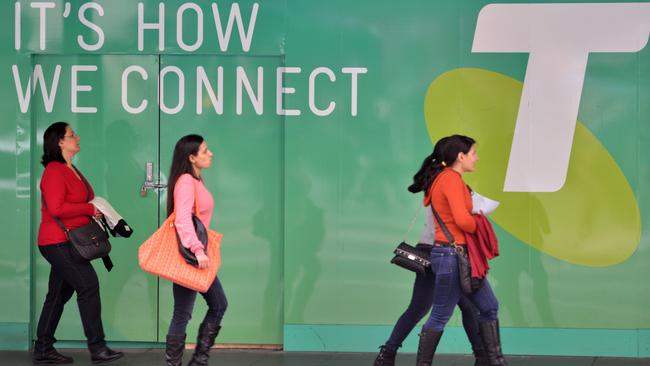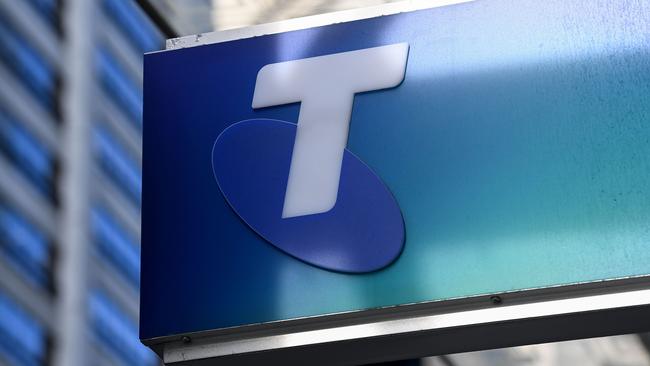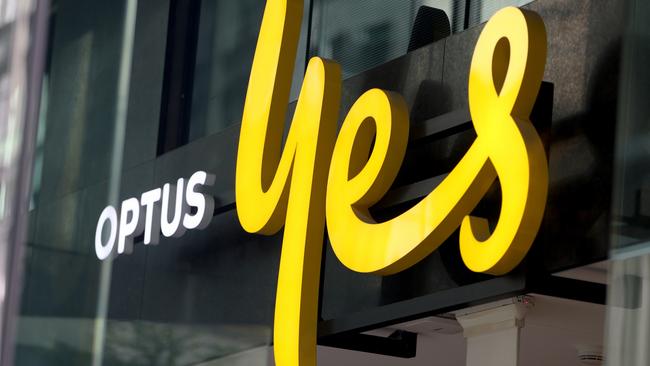Hiking mobile plans by more than CPI will hit RBA, customers alike
Telstra’s inflation-stoking move speaks volumes about the lack of competitive spirit in the telco market and will be bad news for the central bank as much as customers.

Business
Don't miss out on the headlines from Business. Followed categories will be added to My News.
Telstra boss Vicki Brady was true to her word when just a few months ago she told customers there were no plans to push through price rises in line with inflation.
Instead, the telco went higher.
Telstra has raised prices across its postpaid and prepaid mobile plans with higher charges.
The changes will be introduced from August for prepaid and October for the bulk of its customers on a monthly mobile plan.
The rises range from between $2 and $4 depending on the plans, but for most the increases represent between 4 per cent and 5 per cent.
However, the jump in some prepaid services are pushing double digits; for example the $35 monthly plan jumps to $39, or 11 per cent. And across some services sold through retailers such as JB Hi-Fi, the price rise also comes with a sharply reduced data allowance. That’s shrinkflation in action.
All this is very bad news for consumers and equally worrying for the nation’s central bank, given the uphill battle it faces to cool inflation across the economy.
Mobile pricing falls squarely in the services category and this is the very thing proving to be sticky. On the current numbers, if the Reserve Bank starts losing control of the inflation narrative here it will be forced to raise interest rates again.
The overall trend shows inflation going up, according to monthly figures, although inflation so far in the quarterly numbers was starting to flatline.
Annualised inflation is running at 4 per cent on the more (volatile) monthly series. The next quarterly CPI update is scheduled this month. The now-distant March quarter numbers were at 3.8 per cent.
In the inflation numbers, communication (phones and postal) represents 3 per cent of the CPI basket and, while this is not huge, like petrol the price rises can have a cascading effect on other services.
Australia Post recently outlined a range of increased prices on services beyond standard stamps – such as parcels and premium mail – from July 1. So if the RBA was looking for signs of disinflation in this basket, it’s not going to find it here.
Competition sleeps
It also speaks volumes about the lack of competitive dynamics in today’s national telco market. Indeed, Telstra has been able to push through bigger than expected price rises – because it can.
In May when Brady outlined her approach to mobile pricing by stepping away from inflation-linked pricing, many thought it was Telstra preparing to stoke the competitive fires. But from an investor perspective why would Telstra want to this?
After all, it was being rushed with demand, even after last year’s 7 per cent price rise. Like airlines, or even new cars, through the Covid-19 pandemic, Telstra was moving while demand was strong.
Brady recently told analysts of “high demand” for Telstra’s mobile products “and the value customers place on our differentiated network, its reliability and our flexible plan”. In other words she was selling a premium product and people were willing to pay.

It’s true Telstra has all the momentum in mobile growth numbers because Optus is trying to find its feet again after last year’s data hack and a management shake-up. Optus recently named former NBN boss Stephen Rue as its new chief executive, and he will be under more pressure than ever to start delivering returns for parent company SingTel.
There are already signs Optus is going for profit margin over growth. It recently raised prices on its monthly mobile plans by between 5 per cent and 6 per cent, paving the way for Telstra to follow.
At the same time, the third-biggest telco, TPG-owned Vodafone, has gone back to the drawing board in its efforts to expand in regional Australia, linking up with Optus for a decade-long mobile coverage joint partnership. TPG got in early, raising its monthly mobile phone fees at the start of the year by between 6 per cent and 9 per cent, blaming the “high costs of doing business”.
Telstra quietly tested price rises through JB Hi-Fi in recent weeks, giving it the confidence the increases in the head brand would stick.
‘Data surge’
It’s true Telstra is feeling the pinch on expenses. It is the lag effect on the broader cost of doing business such as wages, rents and energy that is doing the most damage. Construction costs too have exploded as energy transmission is becoming the new infrastructure boom.
In May it outlined job cuts of 2800, or nearly 10 per cent of its workforce, and staff looking after business customers were the hardest hit.
The telco has in place plans to achieve $350m in annualised cost savings by the end of next financial year.

Telstra’s consumer boss, Brad Whitcomb, blamed the need to push through higher prices on the jump in the demand for data running over the telco’s network. This was adding more pressure to invest in mobile coverage and performance.
However he was less forthcoming about other factors like wages which are still rolling through and feeding the inflation monster. Whitcomb noted “it takes a lot of work and cost to run a mobile network as large as ours and even more to support the increased usage we have seen on our network”.
The real worry about Telstra’s move is it represents a “drift” in inflation expectations that RBA governor Michele Bullock has been warning about. In many ways this is more damaging in the battle to get inflation back under control, given it represents business and consumers simply getting used to inflation, where they also need to play a role.
If inflationary expectations got away in the economy “it would be costly to address”.
Telstra’s inflation-stoking hikes will start coming through the December quarter inflation numbers, just when the RBA needs prices to fall away the most.
And that’s bad for us all.
Water power
AGL boss Damien Nicks has flagged the prospect of expanding the energy generator’s hydro capacity as part of plans to keep base-load power in the grid as the coal generators are switched off.
Speaking at an energy roundtable at CEDA in Sydney, Nicks said AGL’s little known hydro assets are increasingly helping to keep the lights on despite the peaks of renewables such as wind and solar.
AGL is Australia’s largest privately-owned hydro power station operator with an existing installed capacity of 785 megawatts – mostly in Victoria. The projects are inherited from the old State Electricity Commission of Victoria and are in the Kiewa, Dartmouth and Eildon catchments.

AGL has already been promised fast-track approval for its 400 megawatt Muswellbrook Pumped Hydro project in the Hunter Valley.
While current capacity is modest Nicks told the forum AGL is taking another look at hydro. “We are exploring the capacity expansion of our current hydro power plants as well as planning for future growth,” he said.
Hydropower is currently the only low-carbon emission electricity generating technology that can be turned on and off at a moment’s notice, while also storing energy for days to months, he said.
“It’s this ability to store energy, maintain grid reliability and balance intermittent renewable
energy sources, that makes hydro an important part of our generation portfolio,” he said.
AGL plans to spend as much as $10bn over the coming decade adding up to 5.8 gigawatts in generation and firming capacity, including batteries and renewable generation.
johnstone@theaustralian.com.au
Originally published as Hiking mobile plans by more than CPI will hit RBA, customers alike



